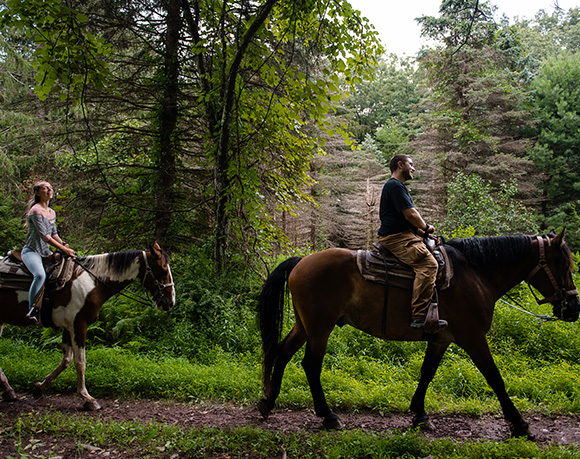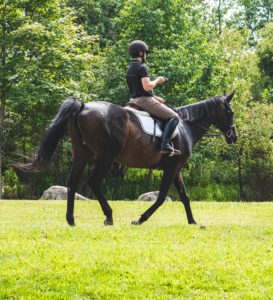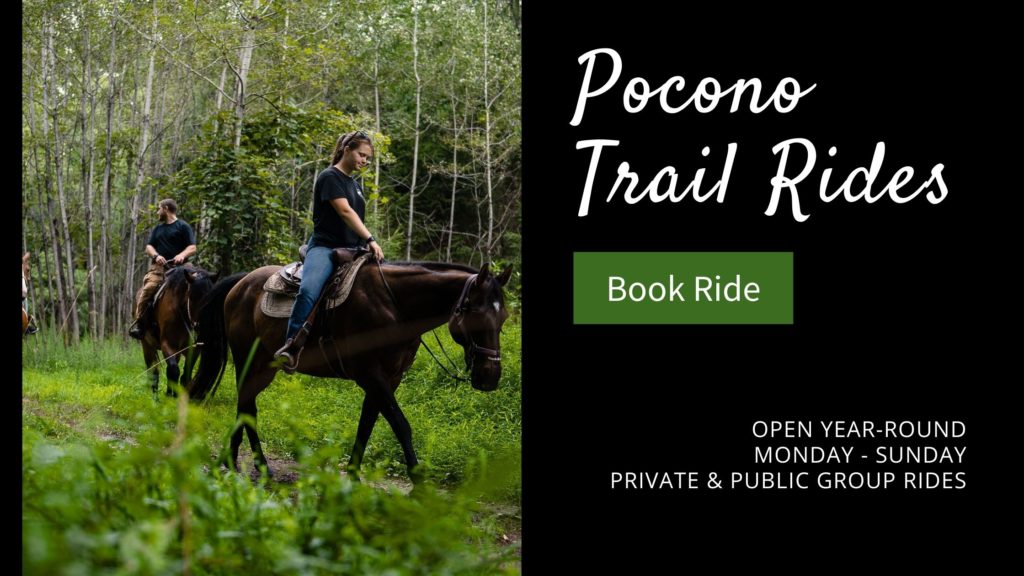03 Apr English vs. Western Horseback Riding: What’s the Difference?
If you’re not an equestrian expert or “horse person,” you may be wondering what the differences are between English and Western riding. At Mountain Creek Riding Stable, we specialize in Western horseback rides for families, couples, and beginners. You may be unsure of what that means exactly, so we’re here to break it down for you.

What is Western Horseback Riding?
Believe it or not, horses did not exist in North America prior to the second voyage of Columbus. After contact with the Spanish Conquistadors in the 1500’s (who explored much of the American Southwest), the Indian tribes learned much about horsemanship. This was then passed on to colonists and, over the years, lead to settlers of the Mid and Southwest United States utilizing horses for transportation, farming, and cattle ranching.
Cattle ranching specifically lead to what is now called “Western” style riding. Cattle ranching required that a rider be safe and secure while riding at high speeds and during quick maneuvers as help was often nowhere near. In addition, the cowboy needed to be able to carry all the equipment necessary for the day with him.
These two things led to the most immediately noticeable differences between Western and English style riding: the saddle and the reins.
The saddle above is a very typical Western saddle. The large, handle-like structure at the top is called the horn and is something that is unique to Western riding. This horn is actually used to control cattle after a rope is tied around the neck of the animal and then tied or dallied (wrapped without a knot) around the horn. In addition, the stirrups (where the feet are placed) are a bit larger than those of English saddles, as riders must be able to mount/dismount quickly.
The reins and tack (pieces of equipment used in horseback riding) for the horse’s head also vary considerably. Reins in Western riding either come split (as above) or are a continuous loop: in either case, the reins and bit (part the goes in the horse’s mouth) are designed so that the rider can control the horse with a single hand.
Of course, one other immediately noticeable difference between the riding styles is the clothing. Think of any old Wild West film: a cowboy, wearing jeans, leather chaps, a long sleeve shirt, and a wide-brimmed cowboy hat comes immediately into your mind, right? While in movies they wear all that for looks, the original cowboys of the Western United States wore it all with a purpose in mind. From making sure they didn’t get sunburned to being able to block out the glare so they could see, the thought process emphasized function more than form.

What is English Horseback Riding?
While horses were used for work throughout the world, the discipline of English style horseback riding descended from the training and discipline that was used in military cavalries. As England (and it’s various colonies) have been around for quite a bit longer than the United States, English style riding has long since left it’s militaristic roots behind and has become a competitive sport.
Though there are many variations on English style competition riding, one of the most common is “Competitive Dressage” (pronounced “drey-sah-zhuh”, like massage). This particular type of riding emphasizes the natural training of the horse to perform calmly and quietly in complete obedience to the rider. Often points are deducted if the horse must be coerced into doing a movement or if the rider must make their commands noticeable.
Due to the fact that English style riding is mainly sport and not meant for long-duration riding, the saddles are designed to maximize the mobility of both the horse and rider. Therefore English saddles are typically smaller and lighter than Western saddles, lacking the horn entirely. The other thing that is noticeable is that there are no extra spots for attachments to an English saddle, as there is no “gear” that would need to be transported.
The reins of English style riding also differ in that they are designed to be held in both hands at all times. In addition, the attire worn by the rider is considerably different. If you can imagine a team of British people playing polo you’ll be partway to the look of an English rider. They often wear high boots with a low heel, white pants, a dark-colored jacket, and white gloves. The purpose is to be understated and refined: the exact opposite of a rodeo. 😉
Now that you’re educated on the different styles of horseback riding, come join us at Mountain Creek Riding Stable for a delightful Western horseback ride with friends or family!




Pingback:English V. Western Riding – Best Horse Rider
Posted at 22:04h, 03 December[…] is important though to understand that while there are breeds that are more common to find in each style of riding, any breed of horse can compete in any discipline. There are […]
Pingback:English vs. Western Horseback Riding in DFW (What’s the Difference?)
Posted at 04:44h, 29 June[…] to the nature of this work and adaptations with horseback riding, it created the most noticeable differences between Western and English style horseback riding, as we’ll explain […]
Pingback:The History of Horses in the Greater Philadelphia Area
Posted at 17:51h, 30 July[…] style tack, as it is easier for novice riders to adjust to. If you’re wanting to learn what the difference is between English and Western horseback riding, hop over to our other blog to dive into the style, tack and skills. And for those just beginning […]
Dixi
Posted at 02:53h, 09 AugustI mean, your article was okay and all, but I have one major concern: In these pictures, no one is wearing a helmet! It doesn’t matter if they are only going on a trail ride with a safe horse! Helmets NEED to be mandatory! Anything could happen! Even the safest horse will spook if a bear comes out of the woods (this actually happened to me while I was riding my horse)! Always be prepared! Yes I am an English rider, but it doesn’t matter how you ride, just please encourage at least a little safety! Also, it looks like those are curb bits. Some of these people have never ridden before. They will jerk at the bit. That is cruel. I’m sorry. I wish that I had something good to say but I don’t:(
Matthew Jones
Posted at 17:01h, 21 DecemberYou’re definitely right: any horseback riding carries some inherent risk, and helmets are the safer option. In the second photo, of the English rider, they actually are wearing a helmet which is specific to English riding. In the top photo, which is from our stable, the riders chose not to wear them: we only require helmets for those under 18 years old. We do have them free and available to anyone who wishes to wear them though!
As for the curb bits, your concern is understandable but you needn’t worry: they are just regular bits in the first photo. We’re well aware of the danger our customers may pose to the horses, given their lack of horseback riding expertise, and we don’t employ curb bits at all at the stable. They’re entirely unnecessary, as our boys are all truly hack horses and will follow the horse in front of them without any input from the rider.